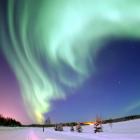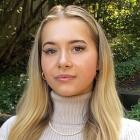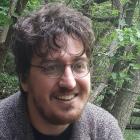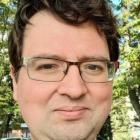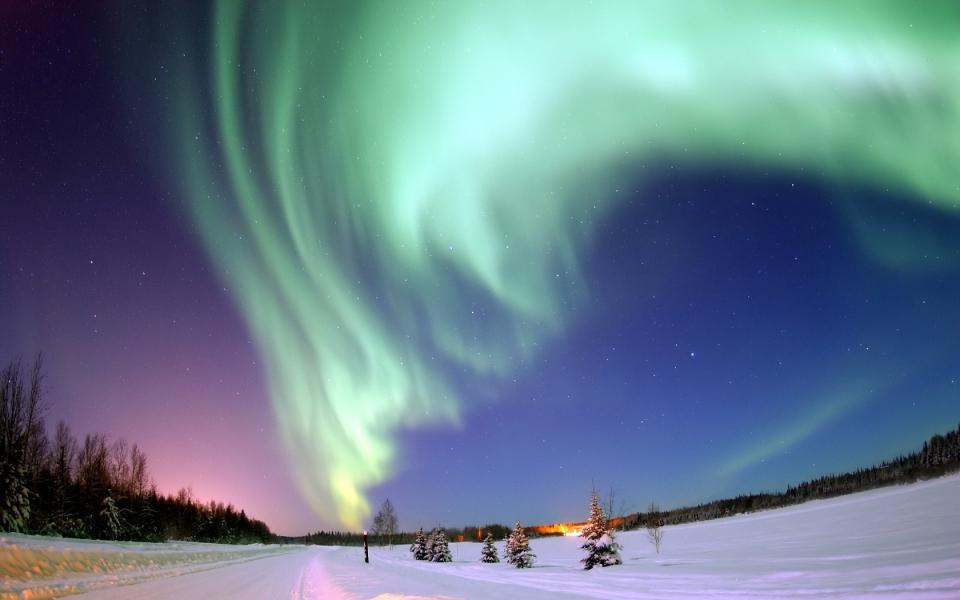
Aurora borealis above the Great Bear Lake
Aurora borealis above the Great Bear Lake
2006 Joshua Strang
Click here to view Wikimedia source.
 This work is licensed under a Creative Commons Attribution 2.0 Generic License.
This work is licensed under a Creative Commons Attribution 2.0 Generic License.
Part of the scientific agenda of the British Arctic land expedition of 1819-22 was to investigate whether the appearance of the aurora borealis was accompanied by any sound. European folklore and indigenous testimony alike reported auroral sounds, typically hissing or rustling noises. Yet this was a highly contentious issue in Arctic science after the Enlightenment, when western publics began to be made aware of the ways in which meteorological phenomena could not easily be made orderly by scientific and intellectual authorities. Reflecting the new dependency of the enlightened observer on accuracy and discernment, British explorers in the field remained ambivalent about whether auroral audibility was possible or whether it was a native superstition. In effect, while questioning the credibility of non-scientific voices, scientists remained enchanted by the possibility of hearing aurorae.
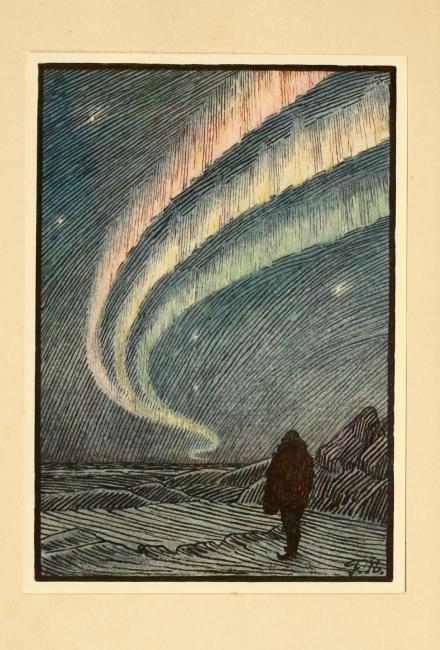
Drawing of an aurora in Fridtjof Nansen’s In Northern Mists (1911)
Drawing of an aurora in Fridtjof Nansen’s In Northern Mists (1911)
Fridtjof Nansen. In Northern Mists: Arctic Exploration in Early Times. Vol. II. New York: Frederick A. Stokes, 1911.
Click here to view Internet Archive source.
 This work is licensed under a Creative Commons Public Domain Mark 1.0 License.
This work is licensed under a Creative Commons Public Domain Mark 1.0 License.
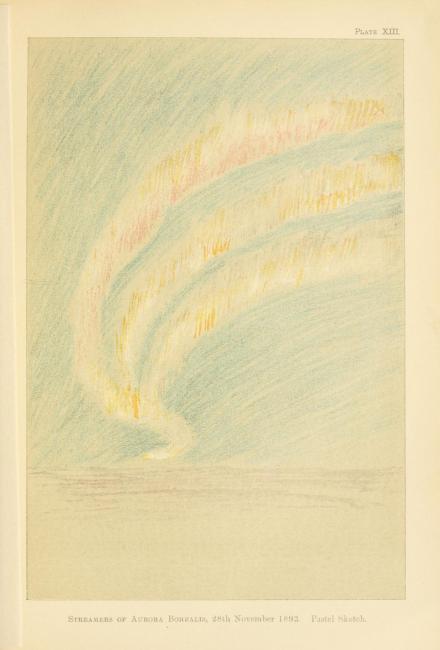
Drawing of an aurora in Fridtjof Nansen’s Farthest North (1897)
Drawing of an aurora in Fridtjof Nansen’s Farthest North (1897)
“Streamers of Aurora Borealis (November 28, 1893).” Fridtjof Nansen. Farthest North: Being the Record of a Voyage of Exploration of the Ship ‘Fram’ 1893–96 and of a Fifteen Months’ Sleigh Journey by Dr. Nansen and Lieut. Johansen . Vol. II. New York: Harper & Brothers Publishers, 1897: 400.
Click here to view Internet Archive source.
 This work is licensed under a Creative Commons Public Domain Mark 1.0 License.
This work is licensed under a Creative Commons Public Domain Mark 1.0 License.

Aurora during the ice pressure (1879)
Aurora during the ice pressure (1879)
Illustration by Julius Payer.
J. Rand Capron. Auroræ: Their Character and Spectra. London: E. & F.N. Spon, 1879: 14.
 This work is licensed under a Creative Commons Public Domain Mark 1.0 License.
This work is licensed under a Creative Commons Public Domain Mark 1.0 License.
The commander of this particular expedition, John Franklin, wrote of how they “imagined, more than once, that we heard a rustling noise like that of autumnal leaves stirred by the wind; but after two hours of attentive listening, we were not entirely convinced of the fact.” At Fort Chipewyan in 1821 a fur trader told the explorers of an incident in which the motions of the aurora were so low “that the Canadians [voyageurs] fell on their faces, and began praying and crying, fearing they should be killed; he himself threw away his gun and knife that they might not attract the flashes, for they were within two feet of the earth, flitting along with incredible swiftness, and moving parallel to its surface. They continued for upwards of five minutes, as near as he could judge, and made a rustling noise, like the waving of a flag in a strong breeze.”
Hearing aurorae was something that eluded most nineteenth-century Arctic explorers and scientists, and was therefore explained as superstition or an acoustic illusion. Even today it remains a contentious subject in geophysics. Yet the fact that indigenous inhabitants, European settlers, and fur traders continued to report hearing aurorae disrupted attempts at the scientific disenchantment of the Arctic. Discussing the particular anomaly of auroral sounds in Arctic narratives therefore revealed submerged discourses on what it meant to be “native” to an environment and how this indigeneity could enhance sense perception or reveal “authentic” spirits of place.
How to cite
McCorristine, Shane. “Sounds in the Sky: Listening for the Aurora Borealis at Fort Chipewyan.” Environment & Society Portal, Arcadia (2012), no. 2. Rachel Carson Center for Environment and Society. https://doi.org/10.5282/rcc/3681.
ISSN 2199-3408
Environment & Society Portal, Arcadia
 This work is licensed under a Creative Commons Attribution-NonCommercial-ShareAlike 3.0 Unported License.
This work is licensed under a Creative Commons Attribution-NonCommercial-ShareAlike 3.0 Unported License.
2012 Shane McCorristine
This refers only to the text and does not include any image rights.
Please click on the images to view their individual rights status.
- Capron, J. Rand. Auroræ: Their Character and Spectra. London: E. & F.N. Spon, 1879.
- Eather, Robert H. Majestic Lights: The Aurora in Science, History, and the Arts. Washington: American Geophysical Union, 1980.
- Franklin, John. Narrative of a Journey to the Shores of the Polar Sea, in the Years 1819, 20, 21, and 22. London: John Murray, 1823.
- Holzworth, Robert H. “Folklore and the Aurora.” In History of Geophysics, vol. 1, edited by C. S. Gillmor, 41–3. Washington: American Geophysical Union, 1984.
- McCorristine, Shane. “The Supernatural Arctic: An Exploration.” Nordic Journal of English Studies 9, no. 1 (2010): 47–70.



